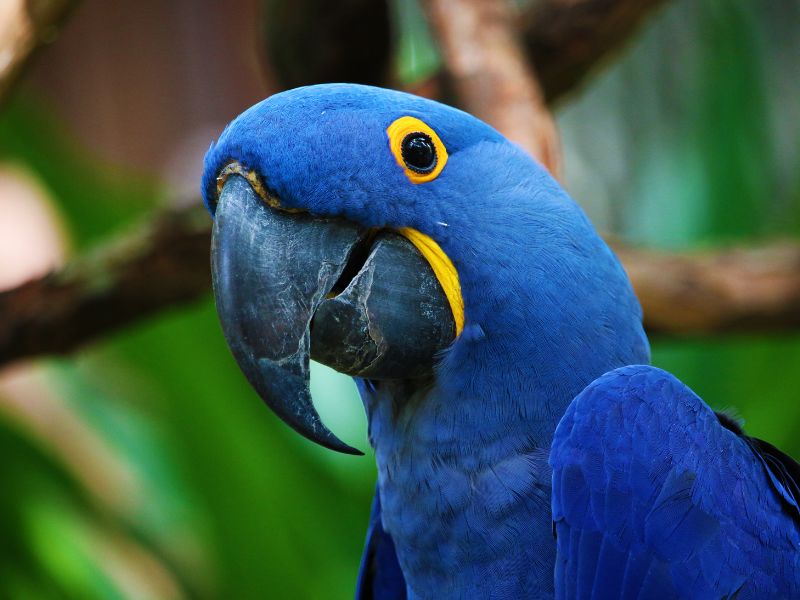How (and Why) Do Parrots Talk Like Humans?
“Hello!”
“Wanna cracker?”
“Come here, cutie!”
If you’ve ever heard a parrot speak, you’ve probably done a double take. It sounds just like a human — sometimes better than a human.
But parrots don’t have lips.
They don’t have vocal cords.
And they’re not trying to be like us.
So why do parrots talk at all?
And how do they pull off such a perfectly human sound?
Let’s peek inside the mind (and chest) of one of the animal kingdom’s strangest superpowers.
The Superpower Called “Vocal Learning”
Parrots are part of a rare group of animals known as vocal learners.
That means they can hear a sound, remember it, and reproduce it — even if it’s a ringtone, a barking dog, or your voice saying, “Stop that!”
Humans are vocal learners too. It’s how babies learn to speak.
But most animals don’t work this way. A dog barks. A cat meows. A rooster crows — no matter what sounds they hear around them.
Parrots, on the other hand, change their sounds based on their surroundings. Constantly. That’s the heart of why parrots talk.
How Do Parrots Talk Without Vocal Cords?
Here’s where things get weird (and brilliant).
Parrots don’t use vocal cords like we do. Instead, they have a strange organ called a syrinx, located deep in their chest. Think of it as a split double-pipe that can control air in two directions — letting them make two different sounds at the same time.
This is how parrots can whistle, chirp, and squawk in layers. It also helps them mimic human speech with eerie accuracy — shaping sounds with their tongue, throat, and clever timing.
Some researchers believe parrots can even mimic emotional tone, which is why some birds sound like they’re laughing, scolding, or begging for snacks.
But Why Can Parrots Mimic Human Speech?
Here’s the truly fascinating part: parrots don’t just copy sounds for fun.
In the wild, parrots live in large, noisy flocks. Communication is everything.
Each bird develops its own signature call, and flocks often share group dialects — like a language.
So what happens when a parrot ends up in a living room instead of a rainforest?
It bonds with you.
It sees you as part of its new flock.
And since you’re the one making sounds, it learns your “dialect.”
Repeating human speech becomes a parrot’s way of saying:
“I’m here. I belong. I’m one of you.”
This is social intelligence at work — parrot communication adapting to its environment.

Do Parrots Understand What They Say?
Sometimes… yes.
Some parrots use words in context. They say “hello” when someone walks in, “goodnight” when the lights go off, and even “no!” when they’re misbehaving.
They don’t just repeat. They associate.
This suggests that parrot intelligence is more than mimicry — it’s built on memory, association, and connection.
Famous African grey parrots like Alex (studied by Dr. Irene Pepperberg) have shown that parrots can count, name colors, and even ask for objects using words.
What This Tells Us About Parrot Brains
Parrots have giant brains for their body size — especially in areas tied to sound, memory, and emotion.
Their “song system” (the brain area used to learn and produce sound) is remarkably similar to human speech centers.
So when you hear a parrot say, “Come here, cutie,” it might not be a joke.
It could be a real attempt at bonding.
Still Wondering?
- Can parrots really talk, or are they just mimicking?
- Do other talking bird species (like mynahs or crows) learn the same way?
- Could a parrot develop its own language with enough time and memory?
Want More Curiosity-Filled Animal Facts?
If this feathered genius fascinated you, you’ll love what else nature has up its sleeve.
From how trees talk underground, to why can’t you hear anything in space, to what if our Moon disappeared one night, our Curious Question series dives into the weird, the wonderful, and the quietly clever.

